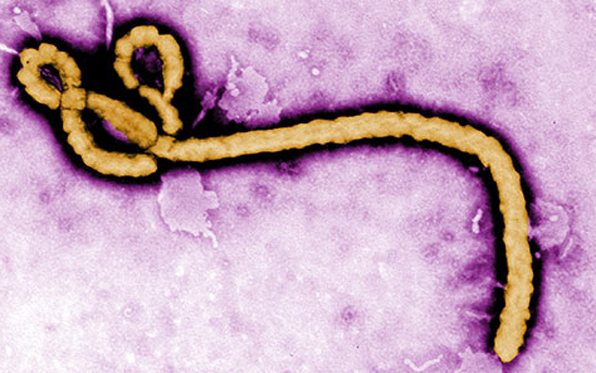County environmental health officials are asking the public for help after the discovery of a new invasive mosquito in San Diego County that feeds in daylight hours and can transmit several diseases.
“We’re urging people to look for, and to eliminate or report any standing water that could be breeding grounds for mosquitoes, outside their homes, but also inside their homes because these small mosquitoes like to breed inside too,” said Elizabeth Pozzebon, director of the San Diego County Department of Environmental Health.
County officials said military entomologists at Naval Base San Diego had discovered four Aedes aegypti mosquitoes, otherwise known as “yellow fever mosquitoes,” in the last couple of weeks in offices at the base, situated on San Diego Bay.
Navy and County vector control teams are working together to put up traps on and around the base to determine if there are more of these mosquitoes. Los Angeles County vector control officials also announced recently that they have found yellow fever mosquitoes in the cities of Commerce and Pico Rivera.
The Aedes aegypti mosquito is small and black with white stripes. It differs from native California mosquitoes in that it is known as an aggressive pest that likes to feed mainly during the day, rather than mostly at dusk and dawn. It also likes to live in urban areas and breed in containers, inside and outside of people’s homes — in almost anything that can contain water — from flowerpots, saucers and cups, to spare tires, rain gutters, untreated swimming pools and drainage ditches. Because it likes urban areas and will breed indoors, people might want to report occurrences where mosquitoes are biting indoors during daylight hours to County vector control.
The yellow fever mosquito has commonly been found on the East Coast. However, it started showing up in a few California counties in 2013. Officials want to keep it out of the state because it can spread dangerous diseases, including yellow fever, chikungunya and dengue fever.
Those diseases are very rare here.
Yellow fever, once known as “yellow jack” and “yellow plague,” is largely contained to tropical areas of Africa and Latin American, and there hasn’t been an outbreak in the United States in more than 100 years. In rare cases it has affected U.S. travelers who have visited tropical countries.
Chikungunya is a viral disease that has historically been kept to Africa, Asia, Europe, and the Indian and Pacific Oceans. However, it has been spreading in recent years. This year, two travelers brought it home to San Diego County and more than 100 cases — including the first two locally acquired cases in U.S. history — have been reported in Florida, according to the national Centers for Disease Control and Prevention (CDC). Chikungunya is spread by infected mosquitoes and cannot be transmitted person-to-person. Symptoms include fever and severe joint pain, often in the hands and feet, and can include headache, muscle pain, joint swelling and rash. The disease is rarely fatal, but there is no vaccine or medication for it.
Dengue fever is still rare, but has been seen here on a yearly basis. San Diego County Department of Health and Human Services statistics report that a dozen people in San Diego County got sick from dengue fever in both 2012 and 2013, after contracting the disease while visiting other countries. There has been one confirmed case here in 2014, which was also contracted outside the county.
Dengue disease, and the more severe dengue hemorragic fever, is caused by any of four related viruses. Dengue hemorrhagic fever can be fatal and there is no vaccine or cure. The CDC reports that the Yellow Fever mosquito is the main carrier of dengue fever in the Western Hemisphere. Like chikungunya, dengue cannot be spread from person to person. Symptoms include sudden onset of fever, severe headache, severe pain behind the eyes, joint pain, muscle and bone pain, rash and mild bleeding.
County officials said people should remember to follow the general advice they have urged people to follow to battle another mosquito-borne disease, West Nile virus: “Prevent, Protect, Report.”
Prevent Mosquito Breeding: Dump out or remove any backyard item that can hold water, such as plant saucers, rain gutters, buckets, garbage cans, toys, old tires, and wheelbarrows. Mosquito fish, available for free, may be used to control mosquito breeding in backyard water sources such as unused swimming pools, ponds, fountains and horse troughs.
Protect Yourself from Mosquito Bites: Protect yourself from West Nile virus by staying inside when mosquitoes are active. Wear long sleeves and pants when outdoors. Use insect repellent containing DEET, picaridin, oil of lemon eucalyptus or IR3535 when outside. Make sure screens on windows and doors are in good condition and secured to keep insects out.
Report Green Swimming Pools (and Dead Birds for West Nile virus): Report green swimming pools, dead crows, ravens, jays, hawks and owls, and to the Vector Control Program at (858) 694-2888 or vector@sdcounty.ca.gov. People can also anonymously report neglected pools by downloading the County’s “Fight the Bite” phone app.
For more information about County Vector Control, go to the program’s website.






